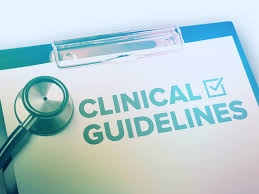
Business Plan for Urgent Care Center in Anaheim California USA
Order Instructions:
The purpose of this application is to provide the student an opportunity to develop an advanced practice nursing (APN) professional business plan.
BUSINESS PLAN for Urgent Care Center in Anaheim California USA
Introduction to the APN professional business plan:
Introduces the purpose of the paper and addresses all background information elements (who, what, where, when, and why) for the proposed APN professional business plan.
Description of proposed APN business profile:
Individually addresses each element of the proposed APN business profile with discussion of how each element could be achieved if implemented.
When describing the proposed APN business profile, be sure to include: (a) proposed vision statement; (b) proposed services; and (c) proposed process for obtaining all anticipated registrations (i.e., Central Contractor Registration [CCR#]; Clinical Laboratory Improvement Amendment [CLIA#]; Commercial And Government Entity [CAGE#]; Dun & Bradstreet Number [DUNS]; Employer Identification Number [EIN]; Marketing Partner Identification Number [MPIN]; National Provider Identifier [NPI#] and Taxonomy Registration; North American Industry Classification System [NAICS#]; Small Business Administration [SBA#]; Standard Industrial Classification [SIC#]; Trading Partner Identification Number [TPIN]), if implemented.
Presentation of proposed APN service delivery:
Individually addresses each element of the proposed APN service delivery with discussion of how each element could be achieved if implemented.
When presenting the proposed APN service delivery, be sure to include: (a) proposed staffing (emphasis on total number of practice years as a licensed healthcare professional); (b) marketing plan and economic feasibility analysis (address potential sources of funding); and (c) management plan with proposed organizational chart
Conclusion:
An effective conclusion identifies the main ideas and major conclusions from the body of your manuscript. Minor details should not be included. Summarize important aspects of the proposed APN professional business plan.
SAMPLE ANSWER
Business Plan for Urgent Care Center in Anaheim California USA
Introduction
Background
Emergency rooms in Anaheim California are characterized by long queues that translate to long waiting hours and for the young children having critical conditions, pediatric urgent care centers have become an alternative for providing child care especially in the after-hours. Taking care of the chronically ill requires a lot of patience and compassion and even more of these attributes are demanded when taking care of sick children especially in the afterhours. Sickness does not consider convenience and with a few urgent care centers and a population of approximately 345,000 people there is a definite need to introduce extra urgent care centers in Anaheim. There is an ever growing need and urgent requests that require filling due to the shortage of emergency pediatric urgent care centers. To help reduce this burden, the Urgent Pediatric Care Centre (UPCC) will be established on the State College Boulevard to cater for the emergency pediatric needs of the citizens in the area.
Business Profile
Mission Statement
It is the mission of the Urgent Pediatric Care Centre (UPCC) to provide high-quality child-centered care for all the children at an affordable price and in the shortest time possible in all of Anaheim.
Vision Statement
Our vision is to become the best pediatric urgent care centre in the country that provides the high-quality pediatric services through continuous education of our staff at affordable prices and the centre of choice for all children and parents nationally.
Services Offered
Children need special attention and care in times of illness. Therefore, UPCC will provide comprehensive care for the children and cater for the needs of the parent while at the centre. The multidisciplinary team comprising of General Practitioners, pediatric doctors, specialists, nurses, surgeons, and other support staff will provide a wide range high-quality services that are walk-in hours throughout the week and year. These include pharmacy, laboratory and x-ray services for quick diagnosis and monitoring, and a fracture program that is comprehensive and overseen by the pediatric specialist. treatment will be provided by for cuts and bruises, cold and flu-like symptoms, ear infections, burns, throat infections, sprains, and rushes just to mention a few. Apart from these, counseling services will be provided for the parent, guardian and or significant other in case of severe life conditions. Where emergency services are required, the support staff will immediately connect you to the nearest hospital or Emergency Room for specialized treatment. The center will be dedicated towards the provision of care and support to the child patient including their parents in every step in the recovery process. While providing such care parents are required to provide company to their child from the start to finish and be actively involved in the recovery and healing process to ensure acceptance and adherence to treatment and positive treatment outcome.
Process for Obtaining all Anticipated Registrations
To obtain all the relevant registrations, the following processes would be applied. First is the Clinical Laboratory Improvements Amendments (CLIA). Since the centre intends to provide laboratory services, certification and registration will allow provision of laboratory services through Medicare and Medicaid payments perks. Second, since the centre is going to provide care under different payment plans, the NPI standard will be sought for accountability purpose and for the sake of sharing with other institutions. Finally, for identification purposes, the Employer ID Numbers will be crucial as this is used by the IRS identify a business entity.
Service Delivery
Staffing
Pediatric care involves both the theoretical and evidence-based approach to practice and provision of care. The care here is not limited to the provision of differential diagnosis and treatment of conditions relating to medical interventions and therapeutics that occurs whether there is a disease or not. Interventions here are holistically provided and incorporate the human and family norms in treatment. Therefore, staffing will be done in a manner that supports the United States healthcare system and requirements and meets the needs of the patients. Staffing will involve supporting the United States healthcare system and the need to acquire highly qualified and well experienced and registered staff. Several options of clinical leads are available, and these leads will handle the emerging cases that “walk-in” to these centers and stabilize the patients before further treatment is provided, or referrals made. The leads will be required to have a minimum of eight years of practice as a licensed pediatric caregiver. The total number of staff required is forty to provide the best care possible.
|
Clinical Leads |
Number |
|
|
General Practitioner |
1 |
|
|
Pediatric Doctor |
1 |
|
|
APRN |
1 |
|
|
Lab Specialist |
1 |
|
|
Pharmacist |
1 |
|
|
Radiologist |
1 |
|
|
Medical Staff |
|
|
|
Nurses |
10 |
|
|
Pharmaceutical Technologist |
2 |
|
|
Pharmacy Assistant |
1 |
|
|
Lab technologist |
2 |
|
|
Lab assistant |
1 |
|
|
Physician Assistants |
4 |
|
|
Counselor |
2 |
|
|
Non-medical staff |
|
|
|
CEO, |
1 |
|
|
Human Resource Manager |
1 |
|
|
Chief Financial Officer |
1 |
|
|
Accountant |
1 |
|
|
Other Staff |
6 |
|
Marketing Plan and Economic Feasibility Analysis
The marketing strategy will be focused on the target population of children and their parents in Anaheim. Since there is a specific target group, the marketing strategy can be narrowed down only to address this group. Advertisement and media usage will be at the heart of the centre’s marketing strategy. Since television advertisements are often very effective, a short one-minute advert will be used with most of the media advert being done on local radio stations for a period of two weeks. The publicity and promotional approach that will be significantly used will be the print media. Billboards will be stylishly designed and placed in the region in strategic locations. Adverts will be published in the Newspaper on a daily basis for the first two weeks then on weekends only for the next four weeks. Pamphlets and brochures will also be prepared that will be handed out to individuals on the streets and to large organizations such as schools, hospital, and day care centers just to mention a few. Since gas filling stations often allow businesses to place their advertisements, posters will be prepared that will be placed on filling stations and the same applied to supermarkets, convenient stores, public toilet, or near children play areas. A promotional event will be organized and sponsorship of local events. The opening will be a community event aimed at introducing the staff and practice to the Anaheim populace. Free services such as blood screening will be done on a monthly basis in public institutions and facilities.
The cost structure will be semi-structured depending on the method of payment and source of payment. Medicare, Medicaid, and other insurance programs will have their price structures that will be dependent on the services provided. There will be three levels of pricing that will be based on a full comprehensive visit at $75, an intermediate problem that is new $65, follow-up visits at $35, and lab services $50. Counseling will be offered free of charge if the child is treated at the centre, however, for those who come from outside, a flat rate of $50 per every 45 minutes will be charged. Educational programs will be free at the hospital, but in case of outside invitations, the fee will be dependent on the location, depth of the program, and number of days the education shall be provided. The closest Urgent care centre here is the Anaheim Urgent Care. They charge higher prices and, therefore, UPCC is expected to attract more clients due to its lower prices and; in addition; they do not open for 24 hours. The centre will seek funds from the government; in addition, the CEO is expected to contribute towards the establishment of the funds. Through community activities, the centre will request for donations, grants, and gifts for establishing and running the institution. Finally, a bank loan will be sought to finance setting up of the centre, and this will be a quarter of the amount required as most financing will come from the government.
Management Plan
UPCC will be incorporated to become a limited liability corporation. This is with the goal of enabling the centre to benefit from taxing regulations, separate liability, and hence similar to a sole proprietorships but with reduced risk associated with sole-proprietorship. This form of business allows a single owner; however, it allows the addition of partners. The main decision maker will be the CEO for the non-medical decisions while the APRN will be the leader decision maker for the non-medical staff; however, this will be on consultation with the management team. This team will comprise of the CEO, CFO, and the HRM.
Conclusion
From the mission statement, UPCC aims at becoming the best urgent care centre not only in Anaheim but the entire nation. The institution will employ three approaches to ensure efficient registration and compliance with the IRS that are CLIA, EIN, and NPI. This will also ensure it provides care to a large population with different insurance plans and payment methods. The institution will offer a broad range of services that include pharmacy, laboratory and x-ray services for quick diagnosis and monitoring, and a fracture program. These will be offered on top of the conventional treatments in pediatric urgent care centers that include treatment for cuts and bruises, cold and flu-like symptoms, ear infections, burns, throat infections, sprains, and rushes just to mention a few. The centre will employ a total of 40 staff members that are highly qualified and experienced. Although it will be located near a well established urgent care centre it will provide the services at a reduced cost and on a 24 hour basis that will give it a competitive advantage. The government will be the main source of funding, and the rest will be sought through the bank, CEO contributions, and grants and gifts from the community. The CEO will be the overall decision maker, but for the medical staff the APRN will be the head responsible for decision making.
Reference
Cox, C., Hill, M., & Lack, V. (2013). Advanced Practice in Healthcare: Skills for Nurses and Allied Health Professionals. New York, NY, United States: Routledge.
We can write this or a similar paper for you! Simply fill the order form!












